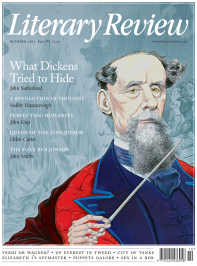John de Falbe
Snapshots
The Foxes Come at Night
By Cees Nooteboom (Translated by Ina Rilke)
MacLehose Press 144pp £12
Cees Nooteboom is one of several well-known international writers whose work was made available in English through Christopher MacLehose’s Harvill Press. Nooteboom’s readership in the UK, unlike that of Murakami and Henning Mankell, was insufficient to tempt Random House, Harvill’s purchaser, to continue publishing him. It is cheering to see the phoenix MacLehose turn some of the proceeds from The Girl with the Dragon Tattoo, which he published in this country, towards Nooteboom again. This book will never augment the bestseller charts, but its low-key form bears greater truths than any number of noisily marketed ‘masterpieces’.
Although set in a variety of places round Europe – Venice, the Ligurian coast, Spain, Holland – the eight stories in this collection have common elements that make them a unity. The most powerful ones are ‘Gondolas’, ‘Heinz’, ‘Paula’ and ‘Paula II’, all of which use photographs as a spur to remembrance, and concern loves and events from decades ago. The first three of these are written from the point of view of a Dutch writer as he approaches old age; the fourth is narrated by Paula’s disembodied voice, long after she has died in a hotel fire. It is an improbable conceit, but it

Sign Up to our newsletter
Receive free articles, highlights from the archive, news, details of prizes, and much more.@Lit_Review
Follow Literary Review on Twitter
Twitter Feed
It wasn’t until 1825 that Pepys’s diary became available for the first time. How it was eventually decrypted and published is a story of subterfuge and duplicity.
Kate Loveman tells the tale.
Kate Loveman - Publishing Pepys
Kate Loveman: Publishing Pepys
literaryreview.co.uk
Arthur Christopher Benson was a pillar of the Edwardian establishment. He was supremely well connected. As his newly published diaries reveal, he was also riotously indiscreet.
Piers Brendon compares Benson’s journals to others from the 20th century.
Piers Brendon - Land of Dopes & Tories
Piers Brendon: Land of Dopes & Tories - The Benson Diaries: Selections from the Diary of Arthur Christopher Benson by Eamon Duffy & Ronald Hyam (edd)
literaryreview.co.uk
Of the siblings Gwen and Augustus John, it is Augustus who has commanded most attention from collectors and connoisseurs.
Was he really the finer artist, asks Tanya Harrod, or is it time Gwen emerged from her brother’s shadow?
Tanya Harrod - Cut from the Same Canvas
Tanya Harrod: Cut from the Same Canvas - Artists, Siblings, Visionaries: The Lives and Loves of Gwen and Augustus John by Judith Mackrell
literaryreview.co.uk